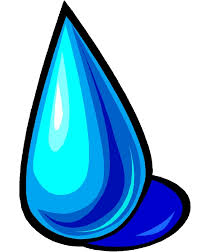
Is it just me or does something seem wrong here?
For months, I've been reading articles about the "safety" of injecting CO2 into the deep sandstone aquifer that is filled with saline water - often called "fossil water". It is said to be considerably more salty than ocean water, so much so that it would never be considered for desalination.
Now this article talks about the Jim Bridger power plant, representing Wyoming's largest source of CO2 emissions, and saline being displaced with the CO2 injection and bringing the saline water to the surface......and being desalinated and returned to the river. (Even MORE POWER (COAL) AND WATER USED - MORE CO2 released into the atmosphere.......with no mention of it possibly getting into our fresh water aquifers)
From the Casper, WY Star-Tribune, March 30, 2009 -
"Thousands of feet below that plant are several sandstone and limestone dome-shaped strata sealed under pressure in a way that makes the "Rock Springs Uplift" ideal for storing huge amounts of injected CO2 -- in excess of 26 billion metric tons, according to early estimates.
"Injecting CO2 into the rock -- no problem. The rock will accept it. The critical problem is the water. That's a major challenge," said Zunsheng Jiao, senior geologist at the Wyoming State Geological Survey.
The porous sandstone and limestone formations are packed with saline water. Jiao said CO2 can be injected into the formations, but it will displace the water on a one-to-one basis. Managing this water presents another set of logistical and fiscal challenges, and it demonstrates the awkward and arduous task of making carbon capture and storage a reality."
It goes on to say, "The technology to capture CO2 is available for large-scale demonstration today, but you wouldn't say yet the technology has been proven at large scale," Procopis said. "These are expensive projects. In the absence of carbon regulation and carbon credits, a utility can't justify the expense."
"The problem of displacing huge amounts of saline water through the injection of CO2 also represents opportunity, according to Wyoming State Geologist Ron Surdam.
The water can be brought to the surface and treated for drinking water or for industrial use, or even for displacement water in accordance with the Colorado River Compact, a multistate agreement governing water distribution in the Colorado River Basin."
Read the entire article here


